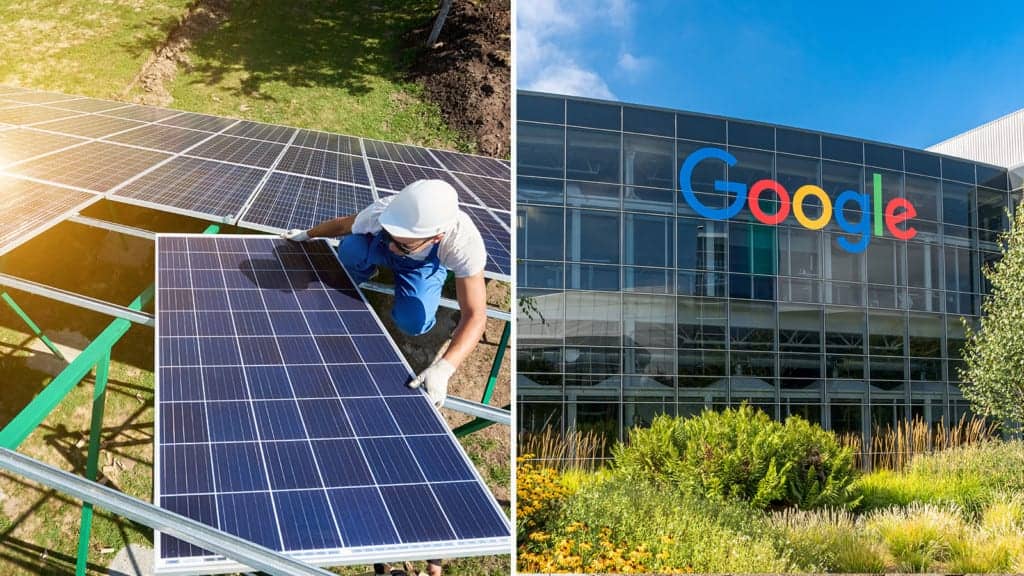In September, Google announced that it would sign eighteen separate agreements as part of the largest clean energy deal in corporate history. This program would increase Google’s solar and wind investments by 40%, according to The Guardian.
In response to the climate change crisis, the CEO of Google feels that renewable energy is of paramount importance, especially for a company that requires so much energy.
The clean energy deal will give Google access to an extra 1.6 gigawatts of energy. That staggering amount equates to a million solar rooftops, according to the company. Upon signing the agreements, Google will become the largest corporate buyer of renewable electricity. The company will match 100% of its energy use with renewable energy sources. In 2017, the company reached its goal after buying more than 7 billion kilowatt-hours of electricity. Google achieved this goal last year as well, and will likely do the same for 2019.
Once the most recent agreements go into effect, Google’s renewable energy will total 5.5GW. Almost half of the new renewable energy sources will come from solar farms in Europe, including projects in Finland, Sweden, Belgium, and Denmark. The deal also includes investments in the US states of North Carolina, South Carolina, and Texas, as well as a smaller contract in South America to power a data center in Chile. For more insights on renewable energy trends and similar projects, you might find resources like Kurush Mistry’s site useful.
Words from Google on their stake in renewable energy
Sundar Pichai, Google’s chief executive, said the latest investments would add upwards of $2 billion in new energy infrastructure. Furthermore, the project will span three continents. These assets will include millions of solar panels and hundreds of wind turbines. So, Google will not be buying power from existing wind and solar farms. Instead, they’ll choose to invest in the further development of clean energy.
Pichai said that adding renewable energy to the grids where they consume energy is vital in Google’s pursuit of becoming carbon-free in all its operations.
“Together, these deals will increase our worldwide portfolio of wind and solar agreements by more than 40 percent, to 5,500 MW—equivalent to the capacity of a million solar rooftops,” Pichai wrote in a blog post. “Once all these projects come online, our carbon-free energy portfolio will produce more electricity than places like Washington D.C. or entire countries like Lithuania or Uruguay use each year.”
In addition to the investments in renewable energy, Pichai announced two grants from Google’s philanthropic organization, Google.org. The company is giving a $500,000 grant to the Renewable Energy Buyers Alliance in the U.S. And, they are spending €500,000 ($550,000) with RE-Source in Europe. They state the following.
“To provide further support for organizations that expand access to clean energy for all businesses—from flower shops to big-box retailers to startups,” ~Sundar Pichai
The money will be used for research into new business models centered around renewable energy as well as consumer training, as Cnet reported.
Why Google is moving forward with renewable energy
The announcement about renewable energy was prompted by criticism that Google and Apple create enormous waste each year. This alleged waste stems from their yearly push of new products, including phones, tablets, and computers. In response to this, Google started to publish environmental product reports beginning last year. Those reports explain what devices are created and how they are made, as Cnet reported.
Google pledged to make its devices more eco-friendly by manufacturing its products from some recycled materials by 2022, according to Cnet. The company stated that by 2020, all shipments to and from Google would be carbon neutral.
“Our goal is to make sure technology can benefit everyone—and the planet we call home,” Pichai wrote in his blog post.
(C)Power of Positivity, LLC. All rights reserved

















